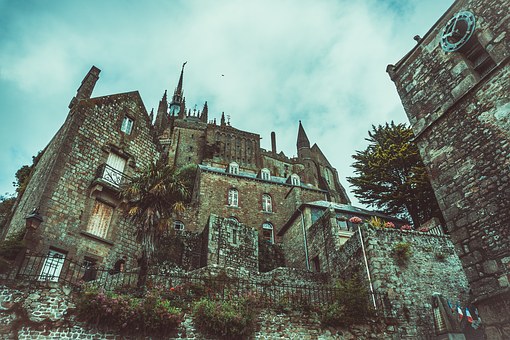What is Gothic Fiction?
I’m a big fan of American Romanticism and its fascination with death and the supernatural. A subset of American Romanticism that really focuses on this fascination is Gothic Fiction, also known as Gothic Horror.
Here we answer the question: “What is Gothic Fiction?”
Elements of Gothic Horror and Gothic Fiction

Common Subject Matter


Ever feel like stacking your lesson plans up and waiting for the earth to swallow them? Well, you won’t feel that way about these “Fall of the House of Usher” Lesson Plans.
Gothic fiction often deals with past eras, sometimes romanticizing them and other times using them as symbols of excessive darkness and oppression. In its early days, the genre took the medieval period as a major inspiration. Modern examples of Gothic Fiction have continued to look to past eras, often using such settings as colonial America, Victorian England or the pre-Civil War Southern United States. Modern Gothic works written in the present day might take place in a 19th century mansion, much in the way that early works commonly used medieval castles as their settings.
Gothic novels were extremely popular during the late 18th century. 19th-century Gothic Fiction is among the best-known and most-read literature in the present day. Gothic Fiction includes works by writers such as Mary Shelley, Edgar Allan Poe, Emily and Anne Bronte, Nathaniel Hawthorne and Oscar Wilde. In modern literature, the more intense and gory horror favored by writers such as Stephen King has largely taken the place of this genre. Gothic Horror, however, has continued to have a faithful following, and its influence can be noted in literature, film and music.
What Makes the Works of Poe Gothic?
Edgar Allan Poe’s works have a number of common themes, motifs and structures that categorize them as Gothic. These elements include death and decay; the presence of madness, insanity or other internal chaos; the supernatural; and haunted locations.
- Lorcher, Trenton. 19 Years of Teaching Edgar Allan Poe and Many More Years of Reading Edgar Allan Poe.
- Smith, Nicole. “Gothic Qualities in the Works of Poe.” Article Myriad. N.p., n.d. Web. 12 Oct. 2016.
- “What Characterizes Gothic Fiction?” WiseGEEK. Conjecture Corporation, n.d. Web. 12 Oct. 2016.
Speak Your Mind